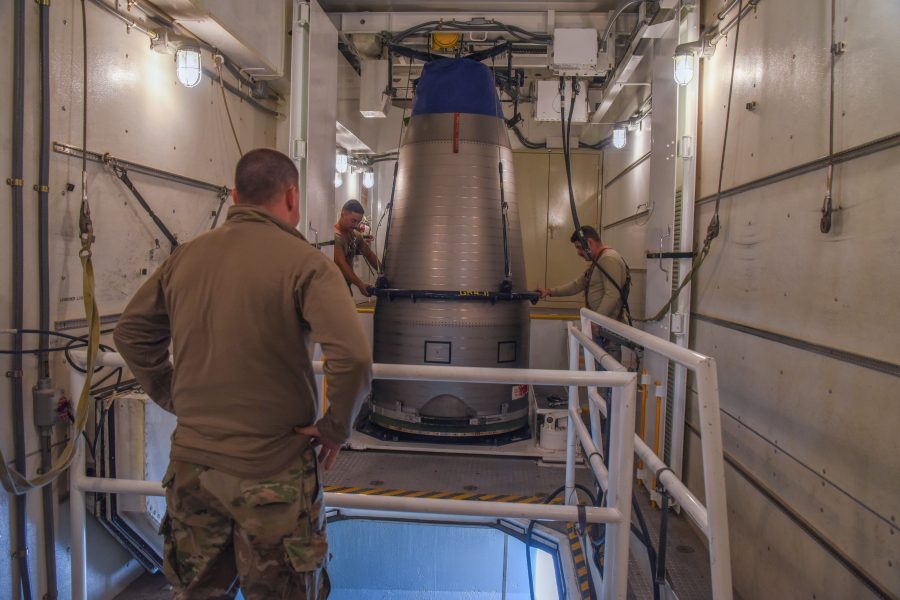The Air Force expects to lose confidence in the full viability of its 400 intercontinental ballistic missiles starting in 2026, three years before replacement nuclear missiles start entering the ground, according to a new Government Accountability Office report.
“According to Air Force officials, as a result of the expected attrition of current field assets, the Minuteman III weapon system will be unable to meet full mission requirements after 2026, should full deployment be required,” the March 26 report said. “Continued asset attrition is also affecting the Minuteman III retirement schedule.”
USAF expends a few unarmed ICBMs for testing each year, drawing down the stockpile while the Minuteman III’s replacement, the Ground-Based Strategic Deterrent, will not be fully available until 2036. The ICBM fleet has already lasted 40 years past its intended service life and suffers from parts availability and maintenance workforce issues.
“At the current rate of four to six missiles expended each year, there is not much margin in the inventory for schedule slips in the deployment of GBSD,” Todd Harrison, who runs the Aerospace Security Project at the Center for Strategic and International Studies, told Air Force Magazine in February. “The Air Force may want to consider slowing the Minuteman test rate to 2-3 missiles per year as a hedge to make sure we don’t drop below 400 missiles in the inventory before GBSD replacements come online.”
Harrison in 2017 forecasted an eight-year dip in the inventory below 400 missiles from fiscal 2032 to 2039 if the GBSD program is delayed for three years without extending the life of existing ICBMs. He suggested the Pentagon could add more nuclear-capable bombers into operations to offset the temporary reduction.
To keep its 1970s-era nuclear weapons in better shape for longer, the Air Force has recently formalized parts of its ICBM maintenance process and plans to refurbish 57 launch facilities a year for eight years. It is also moving toward predictive maintenance to judge the health of its nuclear systems and determine when parts need to be replaced.
“Challenges at these facilities include corrosion, water intrusion, collapsed conduits, misaligned doors, and bulging walls,” the report adds. “The need to sustain nuclear support equipment is reflected in a nuclear enterprise review recommendation to prioritize nuclear support and test equipment.”
GAO’s report is following up on studies from 2014 and 2015 that looked at nuclear enterprise leadership, investments, policy, organization, and more. The watchdog says the Defense Department still needs to address 91 of 247 recommendations from the 2014 reviews and six of 13 recommendations from the 2015 review. DOD agreed to update its information about when certain items are on track to be completed.
“The current DOD guidance for tracking the recommendations’ status does not include a specific requirement to keep the information current in the tracking tools,” GAO said. “Until DOD addresses these issues, it will not have a complete and accurate picture of when tasks are expected to be finished, whether progress is being made, whether efforts have stalled, or if there are other challenges. Ensuring that there is current and complete information regarding enduring recommendations would also help inform DOD’s effort to monitor the health of the defense nuclear enterprise.”
